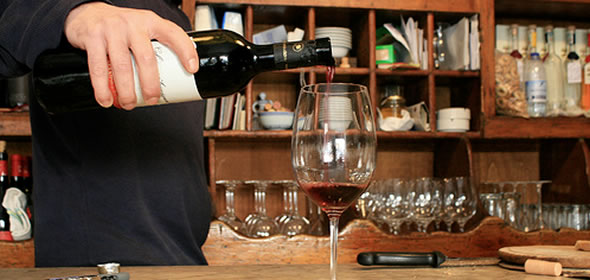- Places
- Plans
- Itineraries
- Experiences

Centuries ago, the Etruscans had a hearty wine industry, and the ancient Greeks bolstered it by transplanting their vine cuttings to Italy’s southlands. And it was Italy, under the Romans, that first introduced the vine and its possibilities to France and Germany.
Wines of the north are generally drier than those of the south, which are usually sweeter and often quite a bit higher in alcohol volume (more sun equals more sugar). Each region has different growing conditions, and so each has its own special wines.
Piemonte is known for its heavy reds, including Barolo, Barbaresco, Barbera, and Nebbiolo, as well as sparkling white Asti Spumante.
The Veneto is known for Valpolicella and Bardolino reds and, among whites, Pinot Grigio and Soave.
Tuscany is one of Italy’s most important wine producers, with reds like Chianti Classico, powerful Brunello di Montalcino, and refined Vino Nobile di Montepulciano (along with the famed white Vernaccia di San Gimignano)
Umbria weighs in with Orvieto white and Montefiascone red.
Emilia-Romagna makes white Albano and the fizzy red Lambrusco (the world's most perfect pizza or picnic wine).
The Marches produce a compelling white called Verdicchio.
The volcanic hills of Lazio around Rome produce mostly whites, including Frascati, Montefiascone, and my personal favorite Est! Est! Est! (though I like it mainly for the story behind its name)
The volcanic soils continue south into Campania, which produces fine whites on the islands of Ischia, and the compelling-named Lacryma Christi ("Tears of Christ") on the slopes of Mt. Vesuvius.
Apulia is home to both white and red Locorotondo and the earthy red Salice Salentino.
Sicily is known for its sweet fortified Marsala wine (drunk as an aperitif), as well as Corvo whites and reds.
More than 30 years ago, the Italian government instituted Denominazione di Origine Controllata, or DOC, a system that is akin to the French Appellation Controlée and certifies a wine’s quality (including the formula of grapes used) and place of origin.
Some years later, a second, higher category was ordained, Denominazione di Origine Controllata e Garantita, or DOCG, to denote wines of particularly high quality control.
Recently IGT (Indicazione Geografica Tipica) was introduced so that modest local wines typical of a region could be labeled as such.
This still leaves the title vino da tavola (table wine) in a situation of split personality. It can mean what it implies, a very humble, simple wine, perhaps made by a local farmer's cooperative or even the restaurant owner's brother-in-law, very cheap and usually pretty good. However, for years it has also been used on bottles of superior or experimental “super” wines—often made using foreign grape varietals like merlot, cabernet, and chardonnay—produced by highly regarded vineyards that don't fit into any traditional category.
Although usually highly complex and structured wines, these supervini fall outside the strict DOC or DOCG categories—which is why many now use the IGT label.
Throughout Italy, and especially in Tuscany, you’re likely to encounter Vin Santo (sacred wine), made from grapes that are partly dried on the vine, then dried on racks before being pressed and aged in tiny oak barriques. This sweet wine may be drunk alone, but more often, it’s used for dunking hard almond cookies called biscotti as a dessert.
Italians are fond of a Campari-soda at the corner bar around 5pm; it's soda water mixed with a bitter red concoction called Campari that looks like hair tonic and kinda tastes like it, too.
Then there is the galaxy of after-dinner drinks:
Every Italian region—and often each town, or even each family—has its own fire-water. There are far, far too many liqueurs to go into here—most of them herbaliscious and quite bitter—but I will single out three more Italian classics you should try at least once (and will probably only ever want to try once):
Share this page
Search ReidsItaly.com